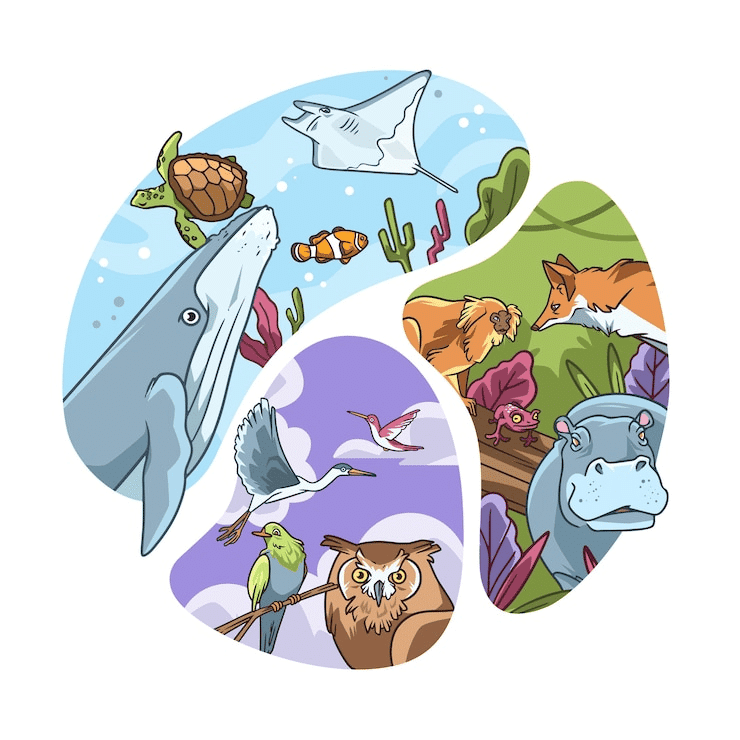
Biodiversity at risk: Why saving endangered species matters
Without biodiversity, ecosystems become less stable and more vulnerable to disturbances, such as climate change or disease outbreaks.
The current crisis: Biodiversity at risk
Human activity is the primary driver of biodiversity loss. Key factors include:
- Habitat destruction: Urbanization, deforestation, and agricultural expansion are displacing species at an unprecedented rate.
- Climate change: Rising temperatures, changing weather patterns, and ocean acidification disrupt ecosystems.
- Pollution: Chemicals, plastics, and other pollutants harm wildlife and degrade habitats.
- Overexploitation: Unsustainable hunting, fishing, and trade in wildlife threaten species’ survival.
- Invasive species: Non-native species introduced to ecosystems can outcompete and displace native species.
The World Wildlife Fund’s Living Planet Report reveals alarming statistics: populations of vertebrate species have declined by nearly 70% on average since 1970. Iconic species like tigers, elephants, and rhinos are on the brink, but lesser-known plants, insects, and amphibians are disappearing at an even faster rate.
Why saving endangered species matters
Protecting endangered species is about more than just conservation; it is essential for the well-being of all life on Earth, including humans. Here’s why:
1. Ecological balance
Every species plays a unique role in its ecosystem. For example, predators like wolves help regulate prey populations, preventing overgrazing and maintaining healthy vegetation. Losing a single species can trigger a domino effect, destabilizing entire ecosystems.
2. Economic benefits
Healthy ecosystems support industries like agriculture, forestry, and tourism. Coral reefs, for instance, protect coastal areas from storm surges and attract millions of tourists annually. The loss of biodiversity could lead to economic losses far greater than the cost of conservation efforts.
3. Scientific discoveries
Many endangered species hold untapped potential for scientific breakthroughs. For example, the venom of certain frogs has been studied for use in painkillers, and the genetic diversity of plants could help develop crops resistant to climate change.
4. Moral responsibility
Humans have a moral obligation to coexist with other species and to mitigate the harm we’ve caused. Preserving biodiversity is a way of respecting the intrinsic value of all life forms.
5. Cultural and spiritual value
Many cultures and indigenous communities have profound connections to specific species and ecosystems. The loss of biodiversity can erode cultural heritage and identity.
What can be done to protect biodiversity?
Reversing biodiversity loss requires global cooperation and individual action. Key strategies include:
1. Protecting habitats
Establishing and managing protected areas, such as national parks and marine reserves, helps conserve critical habitats. Restoring degraded ecosystems can also provide safe spaces for endangered species.
2. Combatting climate change
Reducing greenhouse gas emissions, transitioning to renewable energy, and promoting sustainable land use practices are essential to mitigating climate change’s impact on biodiversity.
3. Sustainable resource use
Adopting sustainable farming, fishing, and forestry practices helps reduce habitat destruction and overexploitation of resources.
4. Legislation and enforcement
Strengthening laws against poaching, illegal wildlife trade, and habitat destruction is vital. International agreements like the Convention on Biological Diversity (CBD) and CITES play a crucial role.
5. Raising awareness
Education and outreach can inspire people to value biodiversity and take action. Community-led initiatives often have a significant impact on local conservation efforts.
6. Supporting conservation organizations
Many organizations work tirelessly to protect endangered species and habitats. Donations, volunteering, or participating in citizen science projects can make a difference.
The ripple effect of saving species
Efforts to save endangered species often benefit entire ecosystems. For example, protecting sea turtles helps maintain healthy seagrass beds and coral reefs, which in turn support fisheries and coastal protection. Similarly, conserving forests for endangered orangutans also combats climate change by preserving carbon sinks.
Conclusion
Biodiversity is the cornerstone of life on Earth, and its loss threatens the stability of ecosystems and the survival of future generations. Saving endangered species is not just an environmental issue—it’s an economic, ethical, and social imperative. By taking action to protect biodiversity, we can create a healthier, more resilient planet for all living beings. Together, we have the power to reverse the tide of extinction and preserve the natural world for generations to come.
